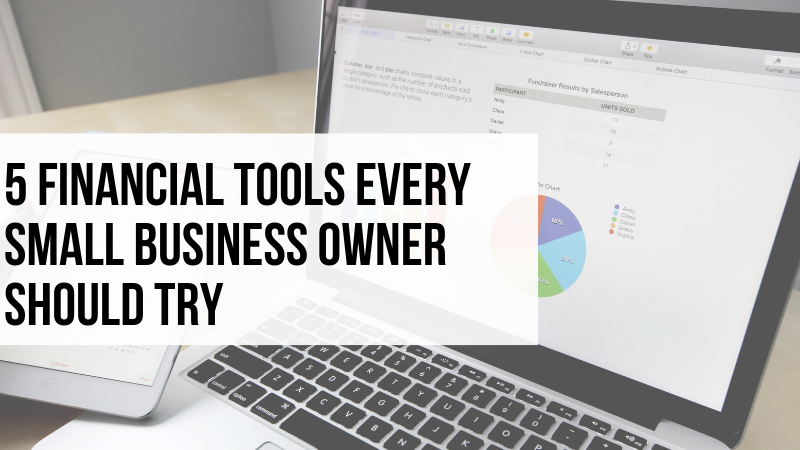Keeping up with the finances of a small business can feel like a never-ending job. From invoices to expenses to day-to-day accounting and dealing with taxes, it’s a wonder how small business owners find the time to actually provide services.
Fortunately, technology has made business management easier and has brought effective tools small businesses can use to work efficiently.
In this article, we explore 5 financial tools every Small business owner should try:
1) Accounting software: Wave
With more than two million users, Wave is one of the most successful online accounting services – and it’s completely free for accounting, invoicing and receipts.
It’s a very well designed and carefully thought out application, and while it’s probably a little basic for medium-sized businesses it’s a good option for sole traders, freelancers, and small firms.
Wave is a perfect fit for small business owners and freelancers who are just starting out with little or no accounting background. Wave’s features include tools for invoicing, accounting and payroll, as well as receipt scanning.
Wave allows you to customize your invoices with your logo, set up reminders and recurring invoices so that you can stay on track when it comes to managing and sending invoices to clients.
However, note that while Wave is free to use, you still pay a token if you perform a sales transaction on the platform.
2) Expense Tracking: Quickbooks
Looking to consolidate your entire business management, including expense tracking, and payroll, all in one app.If you run a small business? Then Quickbooks is the app for you.
When it comes to accounting software programs, Quickbooks is a name that needs no introduction. Quickbooks is a software program that lets you create comprehensive invoices, manage cash flow, keep track of profit and loss and more.
Depending on your business needs you can choose from the various versions Quickbooks and the best part is that you don’t have to be an accounting expert in order to take advantage of all the features that it has to offer.
3) Payroll management: SumoPayroll
SumoPayroll is a cloud-based payroll and HR management platform designed to simplify payroll calculations, attendance management, performance evaluations, and other HR-related tasks.
SumoPayroll provides small business owners with a platform that enables them to store all information about their employees in a single, unified cloud-based location.
Another interesting feature of the platform is that it allows you to customize payroll compensation types according to your business needs.
Small business owners can access this software completely free if they have no more than 10 employees.
4) Invoicing: Invoicely
If you’re a business just starting out, you might want to check out Invoicely. Previously called Invoiceable, Invoicely is a free tool that allows you to send unlimited invoices to an unlimited number of customers.
The free plan allows you to send multiple invoices to multiple businesses. However, as your business grows, you may need to add more features like customization, adding team members to the account, tracking expenses and billable hours. When this happens, you may consider upgrading to one of the paid plans.
5) Inventory management – Zoho inventory
Zoho inventory boasts of having a powerful inventory control which allows its users to manage their orders and inventory effectively.
Zoho offers different levels of subscriptions with plans ranging from a free version – which allows up to 20 shipments tracking monthly to the professional plan at $199 which can go as high as 3000 shipments tracking monthly.
Zoho’s inventory management software also allows you to integrate major eCommerce accounts including Amazon, eBay, and Shopify. Finally, with its accounting software integrations such as “Zoho invoice”, you can keep a better track of your business’s finances and customer invoices.
Which of these tools do you use for your small business? What has been your experience with it?


nice post and well done
Thank you for stopping by.
Best crafted content that can be easily understood by any business professionals. Expecting a similar blog post from you.
Thank you for your comment. I publish new posts at least twice a month.